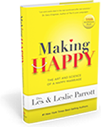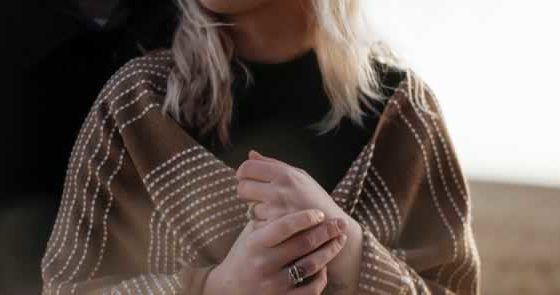He squeezed my hand as my body shook with pain. I clawed at the sheets as the fire grew in my belly. My breaths came in labored gasps. I tried to focus on the conversation through the static of my throbbing brain, as phrases like “history of anxiety” and “panic attack” jabbed at my consciousness. My rolling eyes found his steady gaze; his clear blue eyes collected tears while his brow knotted together in a question mark. As I took another heaving breath and let out a sob, I anchored myself to the weight of his clear booming voice. “You need to treat her breakthrough pain. Call the doctor and give her something now.”
When your chart reads “anxiety,” you get other unspoken words that dangle from it like “hypochondriac” and “overdramatic.” But as the new nurse tried to affix a label and file me away with her other patients, my husband stood firmly in her way. He knew what it looked like when I wore real pain, and he wouldn’t stand by and watch me suffer.
He put his lips on my temple and shushed and rocked me like an injured child. “She’s taking care of it, it will be better soon,” he whispered. I squeezed my eyes shut until the Dilaudid coursed through my veins, making my arms and legs heavy and my mind numb. I drifted off into a painless sleep, my heart wrapped tightly around the man who stood at my side.
My mom always told me, “Don’t marry the man who makes you feel loved; marry the one who shows you love.”
My mom always told me, “Don’t marry the man who makes you feel loved; marry the one who shows you love.” I felt doubly blessed when I met the one who not only made me feel adored, but proved his love by moving his life, packed neatly in his dusty blue Oldsmobile, across 2,000 miles and six states.
In the beginning of our marriage, I clung to the dreams of the future, to feelings so powerful that they fueled me through each day. But as time passes, the dreams give way to reality, and the feelings that were once so vibrant become less palpable. The love that we wrap tightly around ourselves for security can become threadbare with the trials of time and struggle, and a love once visceral can become hidden in the fabric of everyday life.
In the happy moments we celebrate our love; in the difficult moments, we just love.
What my mom tried to teach me, from the lens of 30 years of marriage, is that love isn’t what we feel, it’s what we do.
The winsome feelings that bubble over when we love someone are light and beautiful and airy and whimsical. But bubbles are also elusive; they are paper-thin and fleeting fragments of beauty that pop when we try to grab hold of them. What’s left is love that digs in and makes itself at home, the homemade love that’s knit together by the choices we make every day.
Love is also seeing the best in someone when they can’t find their reflection, and knowing what someone needs when they can’t ask for it themselves.
We don’t always find love in the sparkle of an evening dress and besides a candlelit dinner. Sometimes it surprises us in the warm embrace of a fleece robe and under fluorescent lights in a hospital bed.
The “falling in love” part is easy.
Choosing to love someone every day, year after year, takes hard work and commitment. Falling in love and choosing to love are like comparing new shoes to an old favorite pair. Choosing to love someone every day, year after year, takes hard work and commitment. Falling in love and choosing to love are like comparing new shoes to an old favorite pair.
New love is exciting; it’s clean and bright. But love after success and disappointment, after life’s surprises and day-to-day monotony, after realizing dreams and enduring the sharp pain of loss—well, that’s the sort of love that you want to slip into after a long day. It knows your grooves, its leather is worn and soft and exquisite. That kind of love is ineffable—it deserves its own place on the shelf.
So to celebrate six years, my husband and I will get a sitter and I’ll wear my heels and he’ll wear a tie and we’ll gaze at each other in the glow of a candle with wine warming our bellies. But I won’t just see my husband’s cleanly shaven face, I’ll also see his boyish smile at the altar, his worried frown as I curl up in a dark room, his awe at holding his two girls, and his tired face after praying with someone for their last time. I’ll know that by God’s grace, he’ll stand watch at my bedside during seasons when pain intrudes. “Therefore what God has joined together, let no one separate” (Mark 10:9).



 Lindsay has been married to her hunky pastor husband for almost 8 years. They have two beautiful girls and a weiner dog. She’s a coffee drinking & cupcake loving wordsmith. She loves leading, speaking and inspiring others to love well. Visit her corner of the world at her blog, or other social platforms. Find Lindsay on
Lindsay has been married to her hunky pastor husband for almost 8 years. They have two beautiful girls and a weiner dog. She’s a coffee drinking & cupcake loving wordsmith. She loves leading, speaking and inspiring others to love well. Visit her corner of the world at her blog, or other social platforms. Find Lindsay on 







